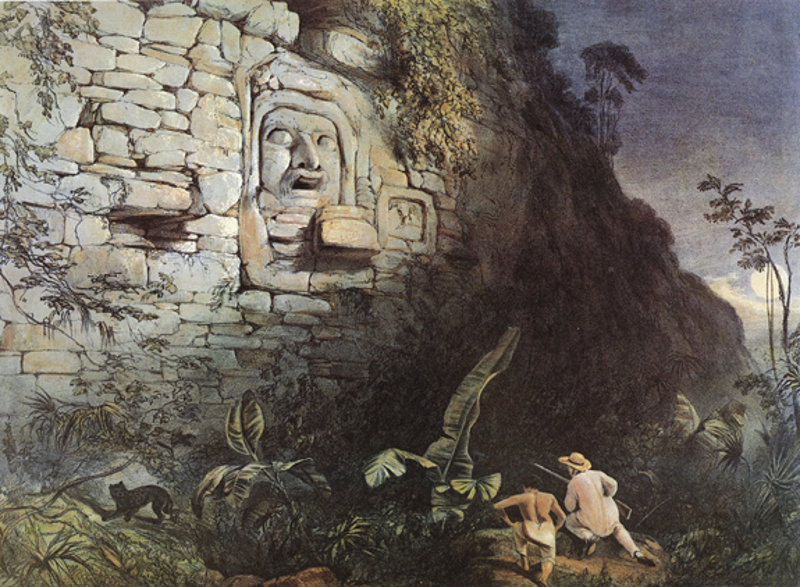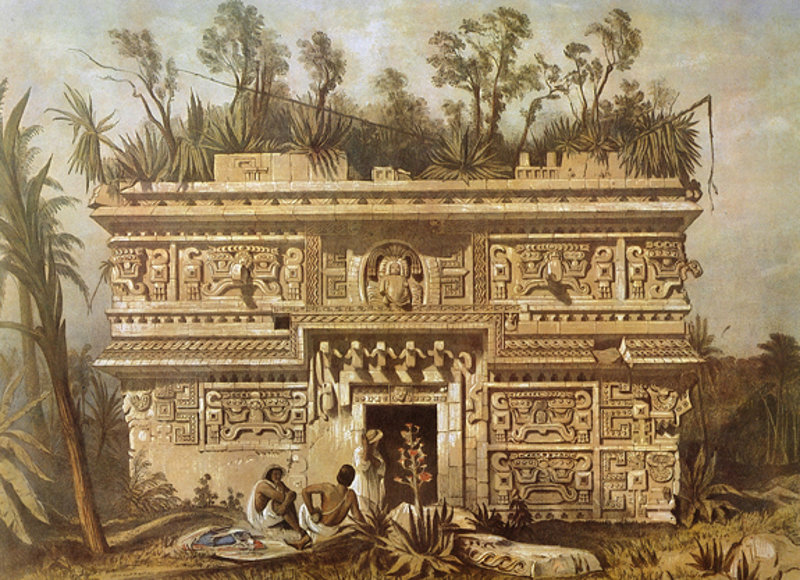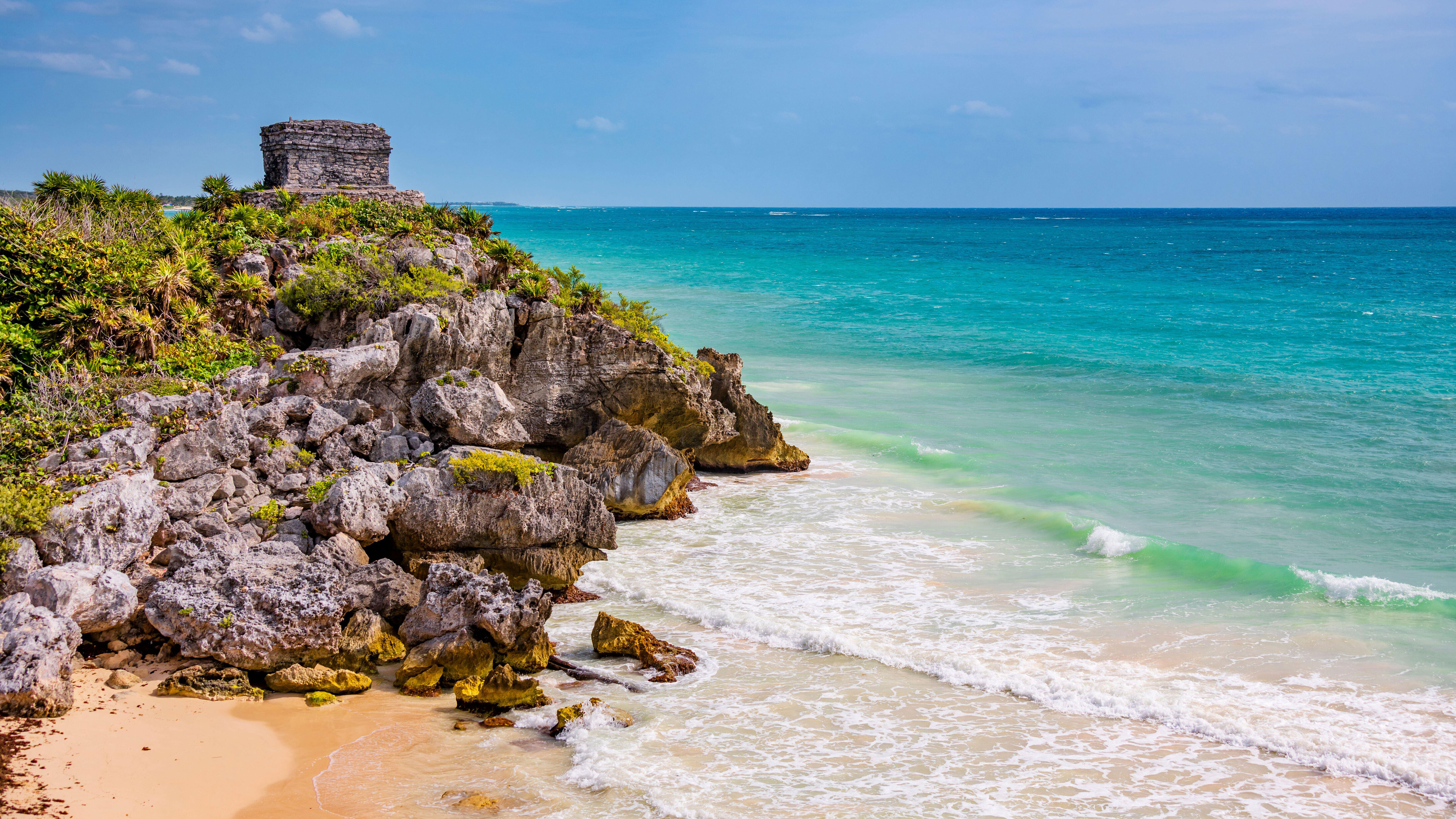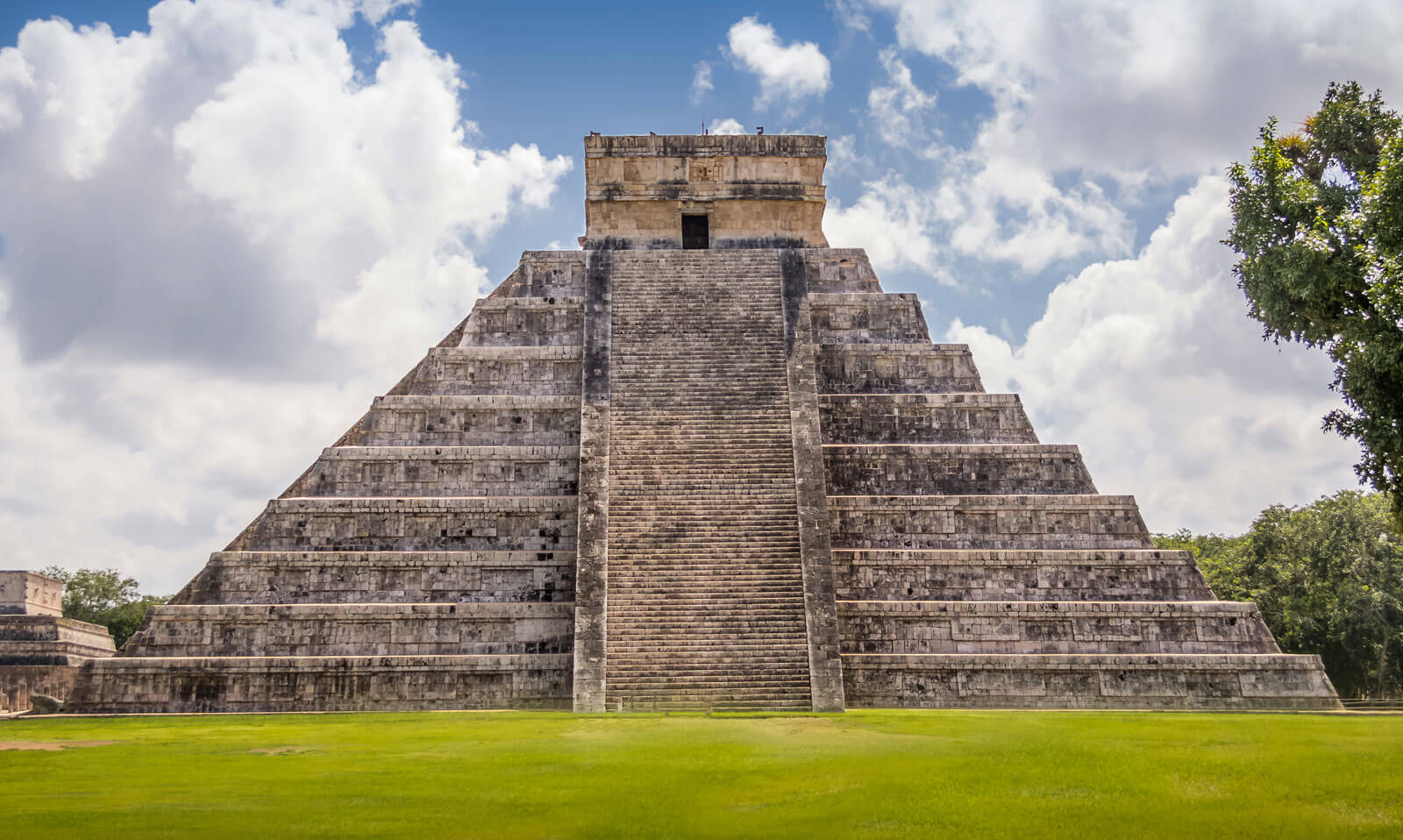During the 16th and 17th centuries, clergymen and conquerors wrote about the life and customs of the Maya peoples who populated Mesoamerica, but over time, their history and architectural prowess were forgotten. In the mid-19th century, the idea of the Maya was based on the indigenous communities in southern Mexico, which were considered incapable of great achievements.
It was two intrepid adventurers, a British and an American, who brought to light the lavish constructions of the Mayas hidden deep in the tropical jungle, thereby revealing the full extent of a civilization of unsuspected wealth.

John Lloyd Stephens was born in Shrewsbury, New Jersey, but before he was two years old his family moved to New York. After studying law in Connecticut, he joined the ranks of the Democratic Party to become a politician. But his life took a radical change when doctors advised him to travel to Europe to recover from a respiratory ailment. He traveled through Rome, Naples, Sicily, and Greece, and continued on to Smyrna, Constantinople, Odessa, and Warsaw. In November 1835 he arrived in Paris to return to the United States but was unable to obtain passage due to the huge influx of emigrants.
During a stopover in London, Stephens would meet the man who was to be his traveling companion for years to come, Frederick Catherwood, with whom he immediately connected. The London-born Catherwood was as multifaceted as his friend Stephens. Born into a wealthy family, he spoke fluent Arabic, Italian, and Greek, and read Hebrew perfectly. An architect, engineer, and draftsman, he had participated in several archaeological expeditions.

Back in New York, Stephens used his contacts in politics to obtain the appointment as ambassador of the United States in the Federal Republic of Central America, with the intention of taking advantage of the position to investigate the archaeological vestiges in the region. Since the end of the 18th century, some sites had been explored, particularly Palenque, about which Stephens had read the works of Antonio del Río (1787) and Guillermo Dupaix (1805-1807).
He was also familiar with the writings of the Mexican ambassador in Paris, Lorenzo de Zavala Sáenz. Stephens contacted his friend Catherwood, whom he hired for $1,500 as an architect, draftsman, topographer, and draftsman. The publication of Arabia Pétrea had become a best-seller, and with its economic benefits, the two set sail for Belize aboard the Mary Ann on October 3, 1839.
Their first objective was Copán, in present-day Honduras. To reach it, they had to pass through impassable muddy roads and endure the humidity, heat, and insects. They macheted their way through the undergrowth. When they were finally able to contemplate those pyramids, so different from the ones they had seen in Egypt, they were ecstatic. They looked at sculptures, stelae, and engravings, convinced that those delicate works had been made by a developed indigenous civilization.
After his first trip to Yucatan, back in New York, Stephens ordered all the material and published a new book, Incidents of Travel in Central America, Chiapas and Yucatan, which surpassed the success of Travel in Arabia Petrea. His work narrated, in a lively style that enchanted the readers of the time, the adventures of a journey as difficult as it was fascinating, in the midst of a magical environment, populated by unknown and mysterious cities.
Stephens and Catherwood immediately decided to embark on a second trip to the Yucatán, which they prepared meticulously. They set out on October 9, 1841, and explored the cities of Aké, Chichén Itzá, Dzibilnocac, Itzamal, Labná, Mayapán, Tulum, and again Uxmal. The naturalist Samuel Cabot accompanied them to study the local fauna. The result was the book Incidents of Travel in Yucatán, which contained 120 engravings by Frederick Catherwood and was published in New York in 1843.

The Maya were an advanced Mesoamerican civilization that flourished in Mexico and Central America from the 3rd to the 15th century AD. They left an impressive imprint on their culture, including a large number of archaeological ruins.
Two of the most famous Mayan cities are Tulum and Chichen Itza. Tulum is located on Mexico's Caribbean coast, while Chichen Itza is on the Yucatan Peninsula. Both cities are UNESCO World Heritage Sites.
Tulum is a fortified city that was built in the 13th century AD. The city is located on a rocky peninsula that juts into the Caribbean Sea. Tulum is known for its temples, palaces, and walls. Tulum's most famous temple is the Castillo, which sits atop the peninsula. The Castillo offers breathtaking views of the Caribbean coast.

Chichen Itza is a larger and more complex city than Tulum. The city was founded in the 7th century AD and reached its peak in the 10th century AD. Chichén Itzá is known for its pyramids, temples, ball courts, and other structures. The most famous temple at Chichén Itzá is the Castillo, which is a 24-meter-high pyramid. The Castillo is dedicated to Kukulcán, the feathered serpent god.
Stephens and Catherwood were the first European explorers to visit Tulum and Chichén Itzá in the 19th century. Their writings and drawings helped make these cities known to the world and awaken interest in Maya culture.
The ruins of Chichen Itza are a testimony to the greatness of the Mayan civilization. They are a fascinating and mysterious place that attracts visitors from all over the world.
Today, Tulum and Chichen Itza are two of Mexico's most popular tourist destinations. The cities attract visitors from all over the world who come to admire their beauty and learn about their rich history.
Source: National Geographic